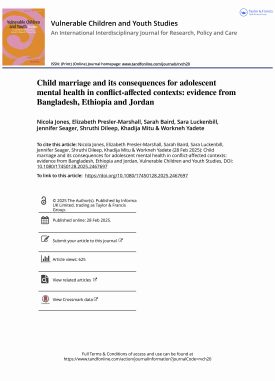This brief summarises the findings of GAGE’s formative qualitative work in Nepal—which took place in 2016 in three contrasting districts: Kapilvastu, Makawanpur and Dang. Based on individual and group interviews with almost 500 people, approximately 300 of whom were adolescents between the ages of 10 and 15, we found that despite significant recent progress, adolescents’—especially girls’— capabilities continue to be truncated.
Primary enrolment rates are high in Nepal—with nearly all girls and boys enrolled in school. Furthermore, girls are now more likely than boys to attend, and complete, secondary school, largely because boys are pulled out of school to work. However, on most other fronts girls continue to face more pressures than boys. For example, they are still likely to marry as children, have high domestic workloads, face restrictions due to menstruation, and—due to social norms that dictate that girls must be sexually pure and subservient—face nearly constant judgement from their families and communities. Girls also have limited mobility and little access to decision-making.
Our research suggests that Nepali girls need access to programming that provides them with opportunities to interact with peers and role models, learn life skills, and grow their aspirations and voice. Parents and broader communities need programming that directly addresses gender norms. Increased financial support to the poorest households would improve both girls’ and boys’ access to secondary school.
Suggested citation
Samuels, F., Ghimire, A., Tamang, A. and Uprety, S. (2017) Exploring Nepali adolescents’ gendered experiences and perspectives. Report. London: Gender and Adolescence: Global Evidence. (https://www.gage.odi.org/publication/nepali-adolescents-gendered-experiences-and-perspectives/)


